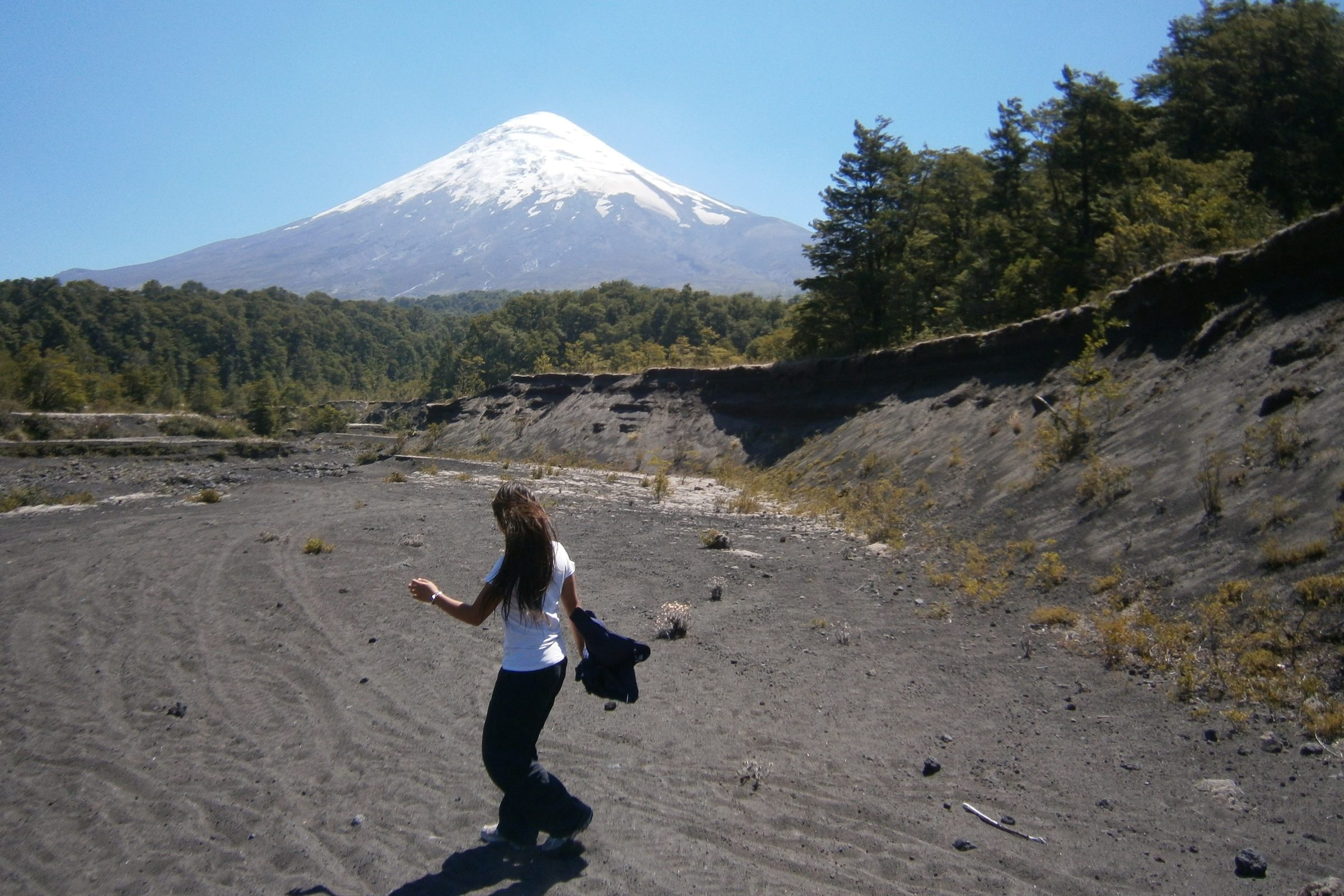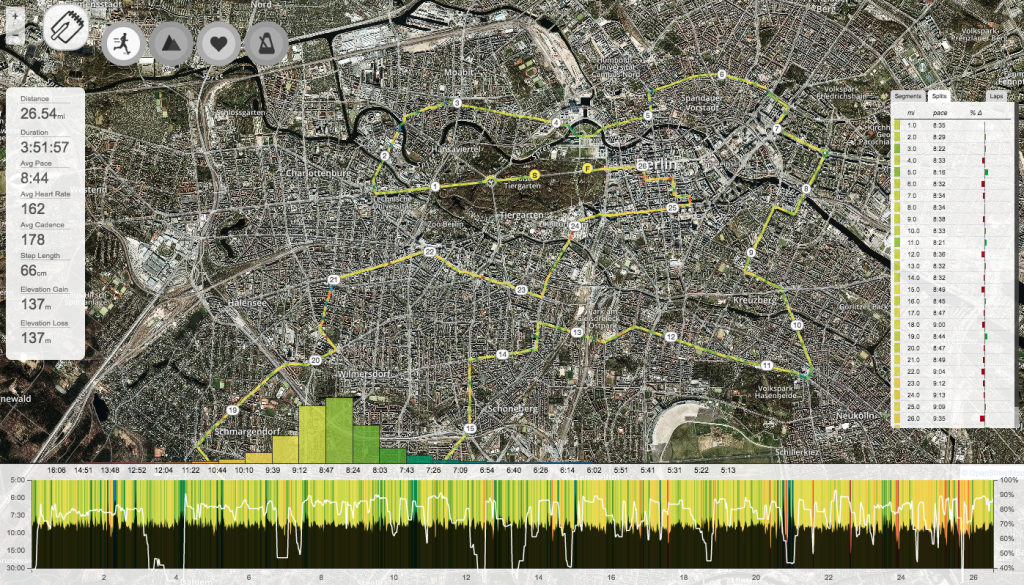Berlin Marathon 2018 Race Report
Ich habe es geschafft. I ran Berlin.
As often as I have run races, I’ve never actually trained that hard for a race. You see, there’s a big difference between telling yourself that you’re going to run a race under a certain time, and telling almost everyone you know, including people you don’t know that you’re targeting a finish time. The former is like making a promise to yourself and, deep down, you know that you don’t actually have to keep it. The latter is like telling all your friends that you can’t go out on Friday or Saturday nights because you have to run long before sunrise the next morning, and you actually have to do those runs or else your friends will hate you for it – so you do them. And so, completely out of character and contrary to how I approached marathon training for my first three marathons – Berlin became my first chronically documented marathon training and I posted every weekly run report publicly to keep people in the loop.
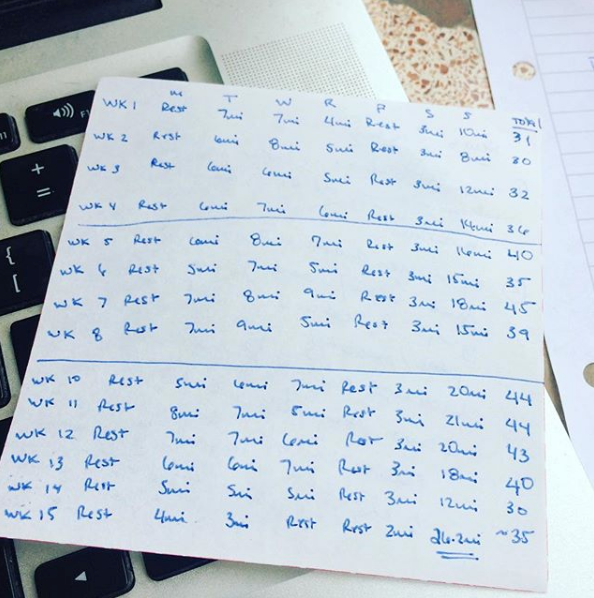
My rough plan – did 1st 6wks and promptly switch to Jack Daniels’ 2Q.
At Smashrun, we’re big proponents of social accountability. We talk the talk. But I’ve never actually experienced what that felt like. Until Sunday.
Prior to Berlin, I ran NYC in 2010 in 4:44:03, followed by the Santiago Marathon in 2012 in 4:23:44, and Amsterdam in 2016 in 4:02:09. As you can see, I’ve taken my sweet time trying to get under 4. Don’t get me wrong, I’ve always wanted to finish a marathon under 4 hours. But it wasn’t until earlier this year that I started thinking about Boston Qualifiers. And Boston, I assure you, is a real stretch for me.
With this in mind, I approached the Berlin Marathon with the goal of finally finishing under 4 hours. And I wanted to be realistic. I’ve been running for more than 10 years, but it wasn’t until 2016 that I started PR’ing in most races and it was also around the same time I renewed my commitment to running for the sake of improving time.
Goals: I wanted a 4% improvement over my last marathon. That would’ve been a goal of 3:52:28. But I like nice round numbers. And I was terrified of going for something that sounded to me like an “aggressive” goal, especially with our frequent moves and – at the time – uncertain training conditions for summer. So I decided to go after 3:55:00.
I’ve done this a few times now and, from experience, I’ve learned that it’s better to train for a faster time to account for unforeseeable circumstances. Overreach a tiny bit, so to speak. I have a lot of room to improve, so I can usually afford to do this. So my training plan was for a 3:45:00. A 10min buffer is pretty sweet, especially when all the training paces seemed very doable. Of course, I recognize that there’s a problem with this approach in that by overreaching, I’m giving myself an out on race day. So I might be more likely to reign it in when the going gets tough… but that’s not the case. I’ve actually found that this approach has helped me push my limits in the past. So I end up running faster than I may have otherwise planned.
Training Plan: Hybrid (Runner’s World Ultimate 3:45 and Jack Daniels 2Q). The Runners World Training Plans don’t really get enough credit for how effective they are, but it brought me up to speed – quite literally. In 4 weeks, I was doing a long run of 10mi or more every Sunday and at about 10s faster than my usual easy pace. By 6 weeks, I was already doing weekly steady runs between 4-9mi at 8:45min/mi and regular 300-800m intervals between 35-50s faster than goal marathon pace. I was off to a great start.
At about 1/3 into my training plan, I switched to Jack Daniels 2Q. I did some ludicrous amount of research on various training plans before settling on JD – although, I’ve been a Daniels fan since I started running. I looked at Hanson’s, Pfitzinger’s, and Lydiard. I ruled out Pfitzinger’s and Lydiard pretty quickly based on the risk of overtraining: doubling up and high mileage weeks are not my forte. Both plans also seemed a bit… monotonous.
On the other hand, I strongly considered doing Hanson’s Marathon Method because there was a fair amount of overlap with JD’s principles. Although Hanson advocates for limiting the long run to 16mi, JD limits it to 2h 30min. It also sticks to the prototypical weekly structure of tempos, intervals, and long runs except that tempo is really marathon paced runs. What I don’t like about Hanson’s method is the lack of any speedwork in the long run. This is because you’re supposed to carry over the cumulative fatigue from your two speedwork sessions each week so that your long run feels more like the last 16mi of a marathon rather than the first 16mi.
I don’t mind this idea. RunnersConnect has a similar training plan where you do might do something like an 8mi easy run on Saturday and then an 18mi run with miles 12-16 at 10-15s faster than marathon pace. And it’s a hard long run. But I wanted to try something different. I get so bored with my long runs that I get sloppy. And when I get tired, I naturally slow down. I don’t even consider speeding up. This is why I chose JD’s 2Q.
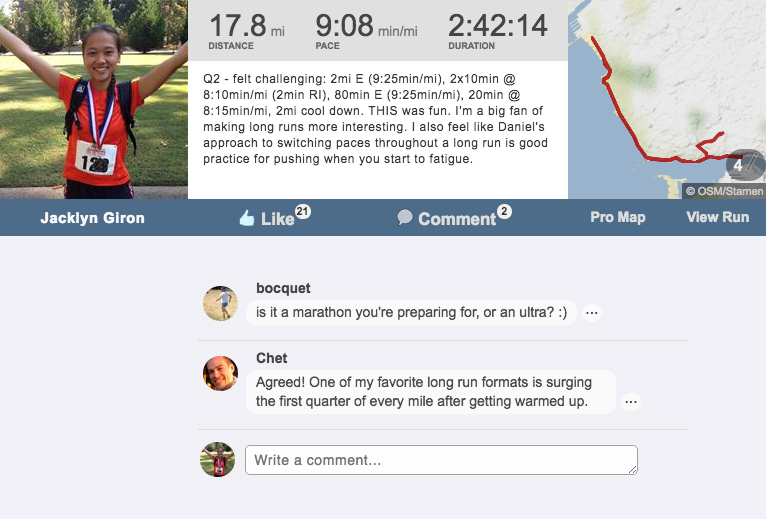
If you’ve never seen a JD 2Q plan before, and you love creating custom workouts for your watch, you’re gonna be giddy with joy. All of the training paces are dictated by your goal time. For the most part, you’ll spend most of your training running Easy (E), Tempo (T), and Long (L) run paces. There’s about 6 weeks in the plan that includes Interval (I) pacing, but I skipped all of it since I used the RW plan in the beginning of my training. Why? Because I’ve found that JD’s interval paces for me are very taxing and I’ve gotten injured doing them in the past.

A section of the 2Q set up.
What I love about JD’s training plan is the flexibility, the variety between sessions, and the super fun medium long run workouts. The plan requires a fair amount of effort from the runner, because you need you figure out (write down) your training paces based on your current VDOT. And yeah, it’s probably a good idea to get the book. Put it right next to your copy of the Lore of Running and Pfitzinger’s Advanced Marathoning. Anyway, I digress…
JD likes to give you runs that switch between paces. For example: a long run with 2mi E + 2x10min @ T (2min RI) + 80min E + 20min @ T + 2mi cool down. Yeah. It’s a pain to program your watch to do this, but it’s worth the effort. By constantly switching between paces, whether it’s easy and tempo, or easy and marathon pace, you end up remembering your paces very quickly and build the muscle memory to run at those paces. What’s more is that when you spend 80min running easy, only to follow it with 20min running at faster than your marathon pace, you learn to push hard once you’re already tired. It was gold, I tell you. I freaking loved JD’s 2Q plan.
Based on my weekly training volume alone, I knew I trained harder for Berlin than any other race.

I peaked at about 50mi w/ a trailing 7day peak of 56mi.
You can dig in to the details on my Smashrun profile (and maybe follow me during my next marathon training cycle!). Here’s a quick rundown of everything I need to remember for myself as a benchmark for next time.
Race weight: 48kg
10km time pre-marathon: 48:08
Best Half pre-marathon: 1:46:04
Best Marathon time pre-Berlin: 4:02:09
In the 4 months leading up to Berlin
Avg Weekly Distance: 42mi (67km)
Number of runs per week: 4
Long runs > 10mi: 15
Long run pace: 9:30min/mi
Longest run distance pre-marathon: 20mi (32km)
Longest run duration pre-marathon: 3:13:46
Race Day. Alright, the day before was a wash.
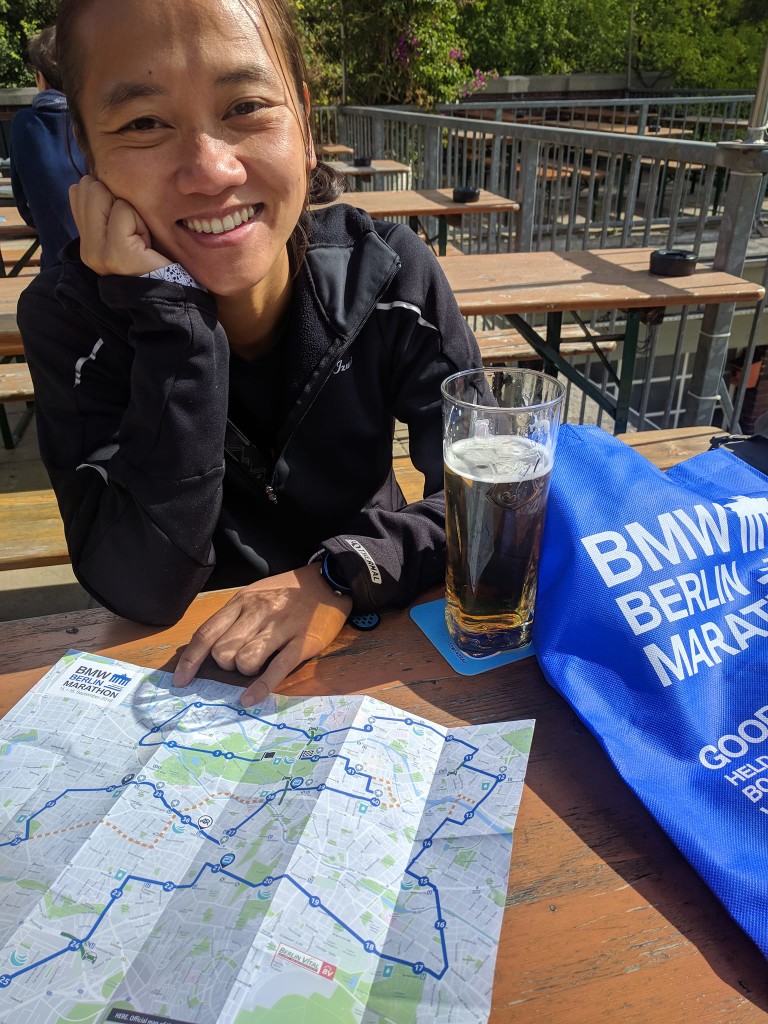
It was our day of travel and, I spent way too much time on my feet on Saturday. From the airport, to the expo, having lunch in a different section of Berlin, late Airbnb check-in, toured the Reichstag dome (yeah, I know).

I must have robbed myself of at least a minute just by walking around so much. But I did sleep early. And that never happens. I must’ve had more than 9 hours of sleep the night before when I usually only get 4 or 5 from nerves.

Me being mad chirpy on race morning.
I woke up at 7:15am on race day. I had some coffee, a bowl of oatmeal, and half a Clif Bar. I also had the biggest bowl of ramen for lunch the day prior and gnocci for dinner the night before, so I was feeling pretty fueled, but far from bloated. We left for Brandenburg Gate at 8:15am, got there, figured out our meeting spot, and I was at my starting block by 9:20am. It was surprisingly easy getting there, despite the crowd.
The Course. If you’ve only ever heard of the Berlin Marathon, then I’m sure you’ve heard what everyone else hears: it’s among the flattest and fastest course you’ll ever run. Having lived in Berlin, I knew this wasn’t exactly true. It’s more like “almost completely flat with the occasional bridge and underpass” but nothing like NYC. It’s also got some super wide turns, so congestion is rarely a problem. I say, rarely, because you will only come across a few turns where people slow down, like the right turn at Hermannplatz or at the Breitenbachplatz underpass.
If it’s a sunny day, as it was on Sunday, most of the course is completely exposed to the sun with the exception of the long stretch along Hasenheide, big chunks of Friedenau/Wilmersdorf, and along parts of Kurfürstendamm. Naturally, it would also depend on how fast you’re running/time of day.
The course is more or less lined with people cheering from start to finish and lots of bands! Quite a lot of drumming, some funky bands, and a couple of odd jazz groups. I’m pretty sure there was also a woman singing opera at some point. It thins out in some parts, like the sad stretch of suffering that usually takes place between mile marker 17 – 23 (25km-37km) but, by and large, it’s a lively course.
Refreshments, however, were a disaster. I mean, beet juice electrolyte drink? Who thought that was a good idea? And plastic cups. Terrible terrible plastic cups. The sound they make when runners crush them beneath their feet really resonates and it was LOUD. Which I guess is great because the signage was so tiny, you kind of needed a warning that it was coming up. And they’re slippery as f#%&! If they do plastic cups again next year, do yourself a favor and bring one of those collapsible cups that are required for trail runs. Or if you’re into bringing your own juice – camelbaks are permitted up to 2L.
Miles [0] to [13]
I was running fairly even splits. I mean, I was rocking it. There were a few odd splits that were too fast like my 8:16min/mi at mile 5 and 8:21min/mi at mile 11, but my legs were in rocket shape. They were cruising and I was just along for the ride. My HR stayed close to 75% of my HRR for the vast majority of it. I wasn’t dehydrated, hungry, or overheated. I was drinking to thirst when I felt like it but I wasn’t chugging water. Took Gu #1 at 15km. Just like in all my training runs. Saw Chris near the start!
Splits: 8:35, 8:29, 8:22, 8:33, 8:16, 8:32, 8:34, 8:34, 8:38, 8:33, 8:21, 8:36, 8:32
Miles [14] to [17]
And then it got warm all of a sudden. Nothing but sunshine. I was sweating truckloads and well on my way to chugging water. Had a banana or two on course. Took Gu #2 at 25km, also same as my training runs. Stomach fine. A bit more tricky getting past the refreshment areas at this point. A lot of slowing down. Too many hazards. People were cutting in sideways to get water. That’s just poor form.
Splits: 8:32, 8:49, 8:45, 8:47
Mile [18]
Holy crap. Right calf seized like it just wanted to destroy my day. Like the kind you get in the middle of the night, which makes you want to grab your calf thinking that it would somehow stop the involuntary muscle spasms. This is a FIRST for me. I’ve never cramped like this during a race. I hit walls, but I don’t cramp. I pushed through it and just barely salvaged my 18mi split at a 9:00min/mi pace. It probably helped that some guy was running along the course with a sign and screaming “new world record! new world record today! 2:01:39!!”
Split: 9:00
Miles [19] to [21]
I was feeling better. I got over it pretty quickly. I did do some weird movements – like smacking my right calf a few times – to get it to snap out of it. It’s not like my brain was fully functioning at this point. I ultimately concluded that I wasn’t going to run any faster than an 8:45min/mi pace. Right calf was intermittently spazzing out, but I was still grinning like a kid who just scored some candy – because I did – and was happily talking to myself about what a great idea it was to train with gummy bears 🙂 Took Gu #3 at 35k.
Splits: 8:44, 8:47, 8:49
Mile [22]
Left calf wanted to join the party! Have you ever had both calves cramp during a race? I really want to understand what went wrong here, because I was hydrated, I had bananas, I took 3 Gu gels already. Nothing felt out of the ordinary and it’s like the wheels just fell off. These cramps were a lot worse. I’m glad some really nice woman gave me a small bottle of Powerade. Imagine that. Some nice lady with her little kids just standing there giving out small bottles of Powerade, water, and pretzel sticks. Man, I love Berliners.
Split: 9:04
Miles [23] to [26.2]
Saw Chris briefly some point before the finish. Yay! I needed to hand over my Spibelt that no longer served a purpose. Apparently, I looked great! The cramps started to wear off around the 42km mark, go figure, but I was so far off my target pace, I was just doing what I can to move forward and pretend like I was still moving as gracefully as I did when I started running that morning.
Splits: 9:12, 9:13, 9:09, 9:35, 9:02
When I saw that gate though, I thought, “Hell YEAH! BEER AT THE FINISH!” Well, actually, it was probably more like “thank god, it’s almost over.” I’m pretty sure I was still smiling at this point. The spectators were so joyful in seeing all the runners cross that gate. It was super contagious.
I checked my watch shortly before the turn that showed me the Brandenburg Gate. I was over 3:49:00. I was very briefly sad about this. Not because I wanted to finish under 3:50:00, but because I felt like I ran a good race. I used to struggle explaining to people the concept of a wall during a marathon. I have a better idea now, because I genuinely feel like I didn’t hit it this time. The wall is that sudden onset of extreme fatigue that forces you to slow down. This was my first marathon where I didn’t feel that. Even when I my calves felt like daggers on my legs, I actually felt like I could’ve kept going. You learn something new after every race right?
After getting my medal, I walked straight towards the exit to get to my meeting point. The post-race bag had a banana, an apple, a bottle of water, some weird tasting granola bar, and a chocolate-filled croissant (I pretty much ate this one first). Then, I hobbled/jogged/walked to where Chris was waiting. We then made plans to meet up with a couple of other marathoners, had several pints at BrewDog and a burger to end the day.

Tiny me is hiding in there somewhere 🙂
3 days after the race. Legs are feeling good again. Will probably shake them out tomorrow. None of my usual hip flexor issues post marathon. No lingering soreness that might point to a problem. I had a lot of stairs to deal with in Berlin, so that probably helped quite a bit with the initial recovery. I need to figure out this cramping problem so that, on my next marathon, I can train for 3:35:00 and be one step closer to Boston.
If you got this far – you’re a champ. Thanks for reading!
